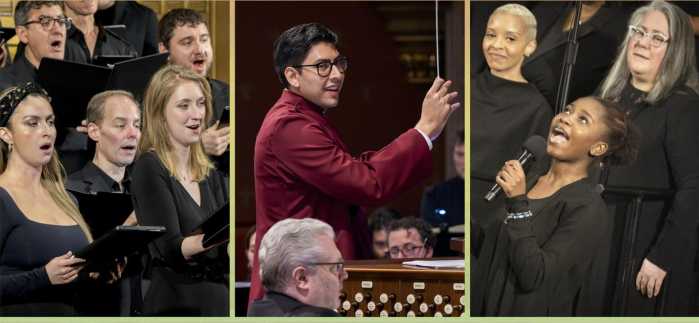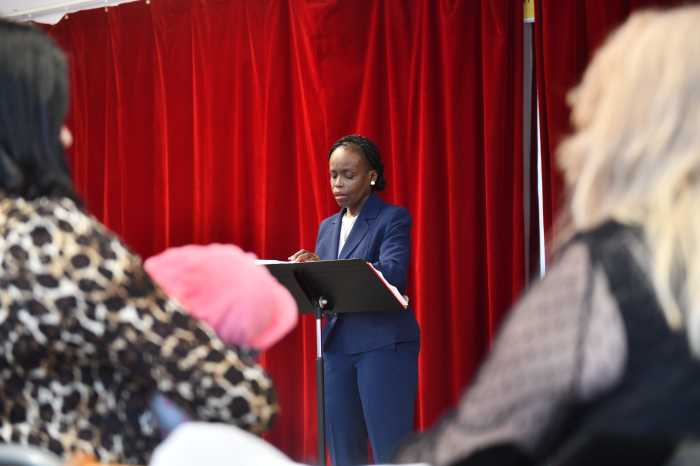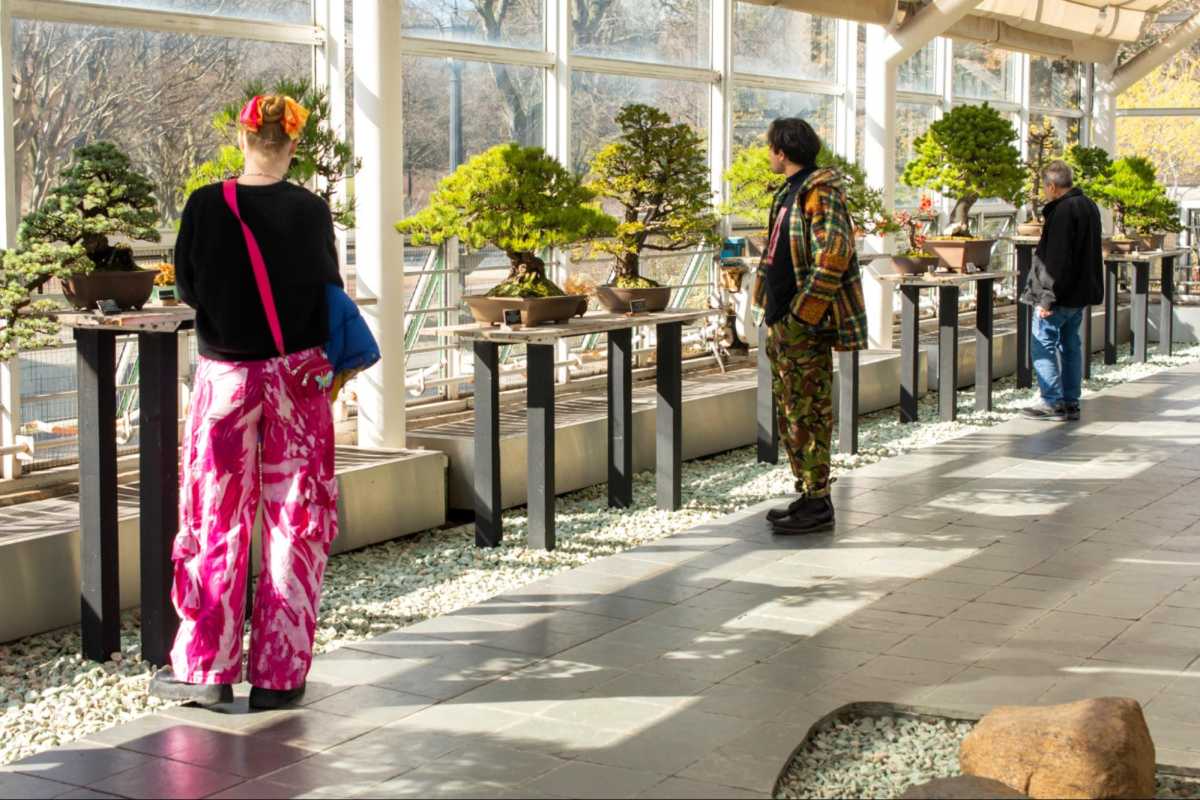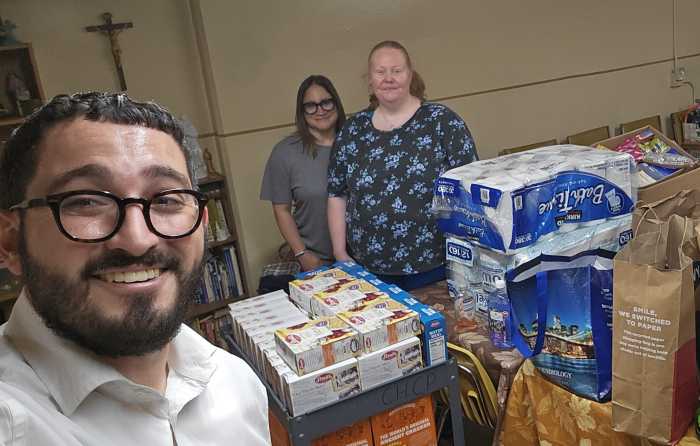By Kristen V. Brown
The walls of Sarah Musa’s cramped, two-bedroom Bleecker St. apartment are covered in clothing sketches and fabric samples, but her roommate doesn’t mind. She’s a fan of Musa’s three-year-old clothing business, Haya, Arabic for “modesty,” which is headquartered here. Haya is a line of conservative-yet-fun clothing Musa designed with young Muslim women like her roommate in mind.
“People think that if you cover your head, it is hard to be fashionable, which is something I am trying to change,” Musa says.
In two years, she’s done just that. Last year, Haya averaged 70 Web-based sales a month, domestically and from countries including Australia and South Africa.
During a recent visit, Musa showed off a surprisingly daring set of geisha-inspired swimsuit sketches, one featuring a rich, sand-colored triangular top in a fan shape.
“I sketch everything I think of,” she says, not always to be made, but to download her prolific imagination. “When I wake up, I sketch like crazy,” she says, “trying to draw everything that I dreamed about.”
Musa says she’s been a fashion enthusiast ever since her parents, who owned a variety of shops and restaurants in Ohio, let her choose her clothing. In middle school, she began rummaging through thrift stores and her parents’ closet, and learning to sew some of her own clothing from scratch by simply measuring herself and drawing patterns directly onto fabric — “which is totally not the right way!” she notes. She hadn’t yet begun observing Islam’s conservative dress traditions. “I would wear things like my dad’s pants from the ’60s!” she laughs.
At 16, Musa embraced her father’s religion by starting to really consider what it meant to her to be a Muslim and reflecting on her own spirituality. That’s when, she explains, wearing the hijab, or headscarf, became important to her spiritually. Her interest in the scarf and her longer skirts as spiritual symbols seemed at first to clash with her passion for fashion.
“Becoming religious was like an identity crisis for me,” she says. “I had these two loves, religion and fashion, and I didn’t really know how I could make the two of them work together.”
There wasn’t much of a variety of fun, conservative clothing, so Musa had to start sewing her own. At first her pieces were simple, poorly made skirts and dresses, but she soon began to expand, making her own patterns and crafting original designs, like nicely tailored dresses and jackets.
Slowly, she realized Islamic fashion could become more than just a hobby.
She wasn’t completely convinced it was a viable career, so when she went to Ohio State University, she studied human development and family sciences, thinking she’d be a teacher. Musa started Haya her senior year, and the momentum built quickly. Right away, with help of her father’s funding, she hired a full-time staff, with some serious business plans in mind. She rented a space, started a Web site and within months Haya was thriving.
Now 23, Musa, a fair-skinned, half-Palestinian, half-Korean beauty with piercing brown eyes, is in her first year studying patternmaking at the Fashion Institute of Technology. She’s pursuing an associate’s degree in patternmaking and a degree in fashion merchandising, and interning at the fashion houses of Carolina Herrera and Anna Sui. For now, Musa is running Haya in her spare time. She’s not designing anything new, only selling her inventory of 14 or 15 styles warehoused in New Jersey.
Musa says her co-workers at both Anna Sui and Herrera were surprised that a hijab-wearing Muslim girl is so successful. And Musa is surprised by her success, too.
“The more I learn about the process of designing, making and marketing clothing, the more difficult this whole process of owning a business and being a fashion designer seems!” she says. “But I didn’t have the sense that starting my own company was impossible because my parents are both small-business owners.”
Next up for Musa is a new clothing line, Inaya, “to care” in Arabic, that she expects to launch when she graduates from F.I.T. next year. While Haya offers simple, neutral-toned basic pieces that are a more modern take on abiyyas, traditional Arab dresses or skirt-and-dress sets, Inaya will be younger, hipper and more urban, with brighter colors and trendier, more daring items of more complex design and fabric.
Her recent student work gives a hint of what’s to come: It’s colorful, inspired by fall leaves and Asian culture, in rich fabrics and textures, including silk brocades and schoolgirl plaids.
“My clothing for Haya is hip,” she says, “but very basic. What I envision for Inaya is much more Urban Outfitters, designed for girls like me who would like to shop there but have trouble finding anything they can wear comfortably.” After a women’s line, Inaya will come out with maternity wear and then children’s clothing, Musa says, hopefully with financial support from her family and many fans of the line.
While Haya and Inaya sprang from a need Musa saw for religious Muslim women to have better-looking clothing options, she wants people to know her clothing isn’t only for Muslims.
“My clothing is for everyone: Christian, Jews, atheists, it doesn’t matter what you are. I just want to create clothing that has a little more of a conscience.”






































